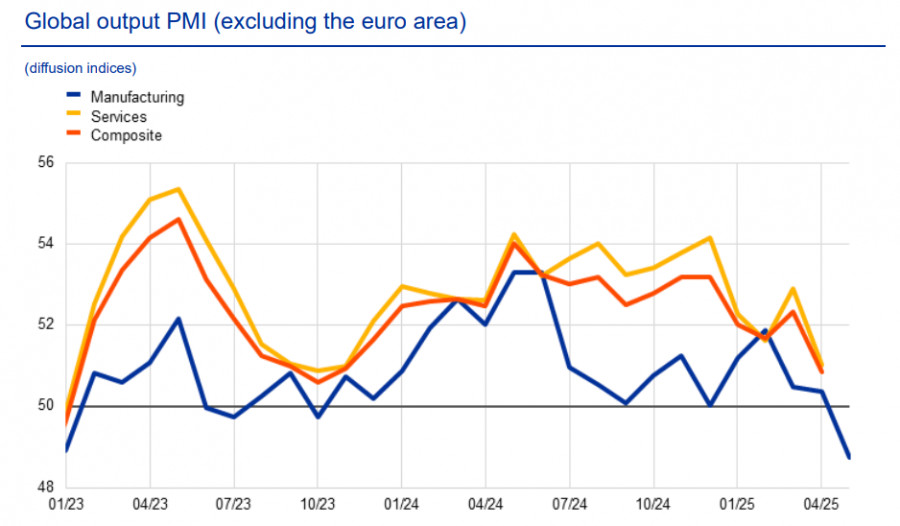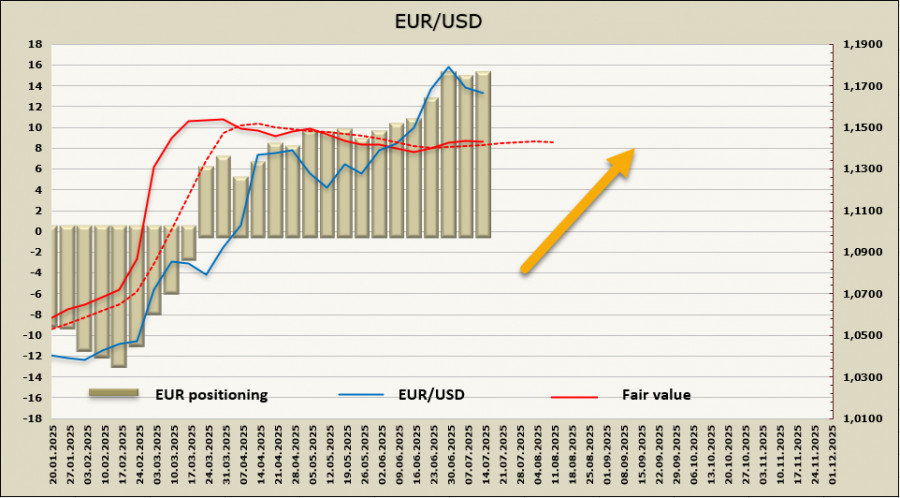See also


 15.07.2025 12:48 AM
15.07.2025 12:48 AMTrade negotiations between the EU and the U.S. remain in the spotlight, and their outcome is expected to have the greatest impact on the future trajectory of the euro.
From an economic standpoint, the euro appears strong. Although eurozone GDP growth is forecast to be modest at around 1%, a recession is likely to be avoided. The European Central Bank has steadily lowered its rate from 4% to 2%, with one more cut to 1.75% expected this year — likely the last. A low rate itself is a strong factor for stimulating the economy. Admittedly, higher export tariffs will weigh on growth, but it is likely to remain in positive territory.
In contrast, the situation in the U.S. is more complicated, with increasing risks of the economy sliding into stagflation. High tariffs are expected to push the core index above the 3% level, and that's only a preliminary estimate. Stagflation is the worst-case scenario for the dollar, and if more signs point in this direction, the dollar could continue weakening, even if the Federal Reserve keeps rates elevated.
In its latest quarterly bulletin, the ECB presented global PMI trends, which clearly show that since April, described as the "day of liberation," business activity has declined sharply. If this process doesn't take a more orderly course, a global depression could be inevitable.
Ursula von der Leyen, President of the European Commission, stated that the bloc will maintain a dual-track approach: continuing negotiations while preparing retaliatory measures. The EU is extending its suspension of countermeasures against U.S. tariffs and will insist on keeping the talks going. The EU's logic is clear — tariffs would inflict catastrophic damage on Europe's economy, and to offset this, the bloc would be forced to impose its countermeasures, which would bring a recession closer, including for the U.S.
Euro positioning has remained steady for the third week in a row at around +16 billion, with only slight fluctuations — a bullish signal, indicating a potential continuation of the rally. The calculated price is above the long-term average, but signs of slowing momentum have emerged.
EUR/USD remains above support at 1.1630/50, and the current pullback is shallow. One more attempt to reach a new high is expected, though it may be unsuccessful, as euro momentum is gradually fading, and the dollar is finally starting to show signs of strengthening. The primary scenario is a test of 1.1829; after that, it will become clearer whether the pair will break higher or enter a deeper correction. Support at 1.1630/50 is holding for now, but if the dollar gets an additional boost — for example, if Tuesday's U.S. inflation data exceeds forecasts — the support may give way and shift toward 1.1440/50.
You have already liked this post today
*The market analysis posted here is meant to increase your awareness, but not to give instructions to make a trade.


